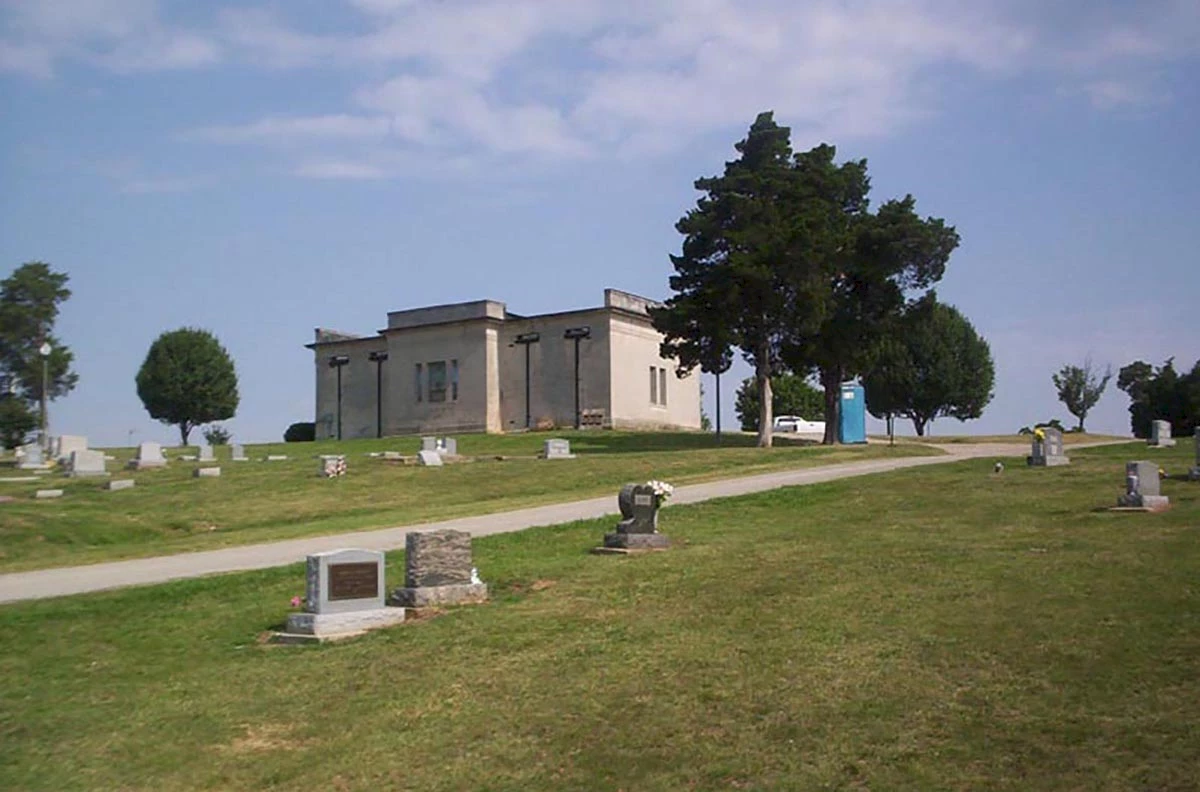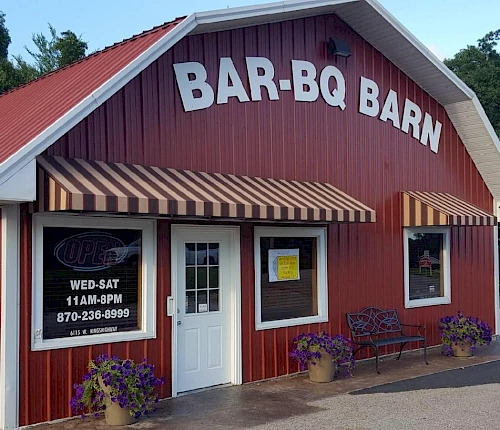Linwood Mausoleum
The Linwood Mausoleum was constructed in 1920 by the Southwestern Mausoleum Company of Little Rock for a group of local private citizens of prominence and affluence. Ownership was later conveyed to the city, and it is the only mausoleum in Arkansas owned by a city. Its heavy stone masonry construction and Classical Revival style are rare in northeast Arkansas. It is an outstanding and unaltered example of the Classical Revival style. Listed in the National Register of Historic Places.
In addition to prominent and respected residents, Frank “Jelly” Nash (Feb. 6, 1887-June 17, 1933), infamous 1930s gangster, is interred here. His underworld connections, big-time racketeering, string of successful bank robberies, murder charges, and skillful prison escapes placed him at the top of the FBI's Most Wanted List. He was considered the most successful bank robber and prison escape artist in U. S. crime history, After his 1933 apprehension in Hot Springs, Arkansas, Nash was being transported to a federal prison in Kansas when his gangland friends attempted a rescue at Union Station in Kansas City, Missouri. Nash was killed in the ensuing blood bath, which became known as the Union Station Massacre. Alice Nash Long, a resident of Paragould, claimed her brother’s bullet-riddled body and brought it back to Arkansas for burial. Underworld figures from around the country lined the approach to the mausoleum in their black limousines on the day of the funeral, and oral tradition has it that an agreement was reach in advance between local law enforcement officials and machine-gun-toting gangsters that Nash’s friends could pay their respects unmolested. Nash’s parents and two sisters also are buried in the mausoleum, listed in the National Register of Historic Places.




